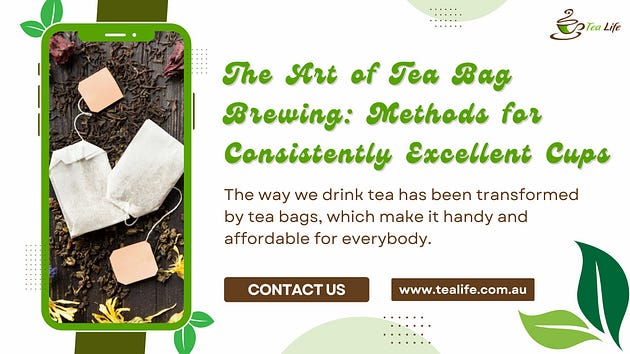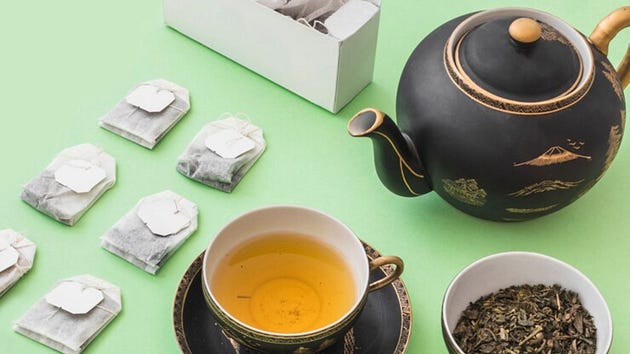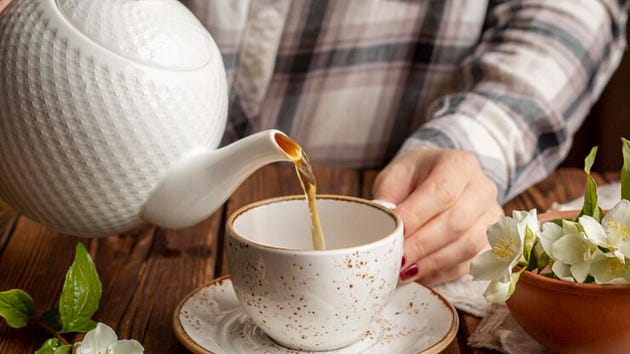The Art of Tea Bag Brewing: Methods for Consistently Excellent Cups

The way we drink tea has been transformed by tea bags, which make it handy and affordable for everybody. However, if you can perfect the skill of making tea from bags, even a basic cup may become a delightful experience. In this section, we’ll go over crucial methods to make sure you always prepare the ideal cup and enjoy your tea every time.
Knowing Tea Bags: Why Quality Counts
The first step in making the ideal cup is choosing premium tea bags. Not every tea bag is made equal; some have complete leaves inside, while others just have highly processed tea dust. Choose tea bags with bigger tea particles or entire leaves; they usually have better taste and scent. Take into account the tea bag’s actual substance as well. Compared to conventional paper tea bags, biodegradable and silk tea bags often do a better job of maintaining the purity of the tea.
The Secret to Flavor in Water

The ideal flavor extraction from tea bags depends on the temperature of the water. The ideal temperature for each variety of tea varies. For example, boiling water (212°F or 100°C) is the ideal temperature for brewing black tea bags, but slightly colder water (175°F or 80°C) works best for green tea bags. While underheating might prevent the flavors from completely releasing, overheating could scorch the delicate leaves and result in a harsh taste.
Finding the Sweet Spot in Steeping Time
A further important consideration for making the ideal cup of tea is the steeping period. An over-steeped beer may be unpleasant, while an under-steeped brew may be weak and unimpressive. For best results, steep black tea bags for three to five minutes, green tea bags for two to three minutes, and herbal tea bags for five to seven minutes. As a general rule, follow the directions on the box of your tea bag, but feel free to modify them based on your own tastes.
Agitation: Shaking or Not Shaking?
Stirring or dipping the tea bag is one example of an agitation that might affect the brewing process. To assist the water circulate and disperse the taste of the tea evenly, gently submerge the tea bag a few times. But try not to stir the tea too much since this will release additional tannins and make it astringent.
The Ideal Container: Selecting Your Tea Set

Your experience with tea may also be influenced by the kind of teaware you use. Cups made of ceramic and porcelain hold heat effectively, keeping your tea warmer for longer. Especially when using whole-leaf tea bags, glass mugs are great for appreciating the aesthetics of tea brewing. Steer clear of plastic cups; they absorb the taste of your tea and change it.
Improving Your Brew: Complements and Symmetry
After you’ve gotten the hang of it, you can spice up your tea experience by experimenting with pairings and add-ins. The natural tastes of your tea may be enhanced and complemented by adding a slice of lemon, a sprinkle of honey, or a splash of milk. Enjoying tea with the proper accompaniments, such as cookies, fruit, or cheese, may also improve the whole tea-drinking experience.
In summary
It takes skill to brew the ideal cup of tea using tea bags; it involves using premium products, exact methods, and a dash of taste. You may improve your tea life and consistently have a very wonderful cup of tea by paying attention to the little things like water temperature, steeping duration, and teaware.
We at Tea Life are committed to introducing you to the delights of tea. Discover our extensive selection of high-quality tea bags, teaware, and accessories to improve your tea-drinking experience and optimize your brewing method. Become a member of the Tea Life community now to turn every cup into a fun tradition.
.jpg)
Comments
Post a Comment